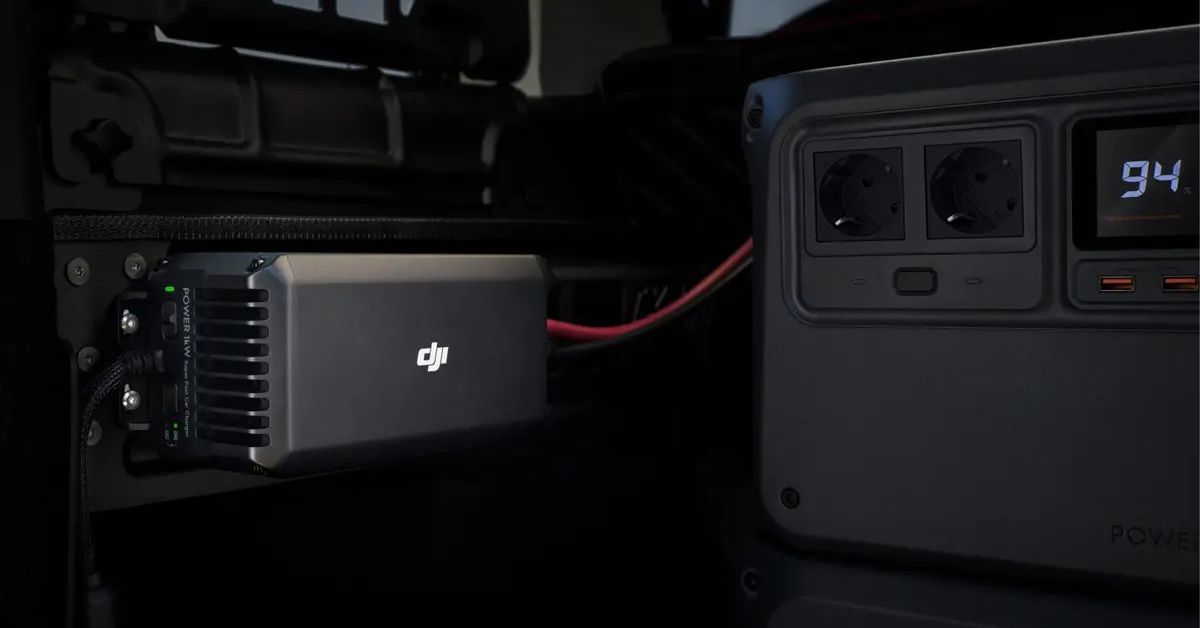DJI now makes a very powerful car charger for its big ass batteries
DJI has quietly introduced a powerful new car charger for its giant portable batteries. The $299 / €269 Power 1kW Super Fast Car Charger can charge the company’s expanding lineup of power stations at up to 1000W from your car’s alternator when the engine is running.
This new class of (nearly) do-it-yourself alternator chargers are having a moment now that the most popular makers of solar generators and power stations have embraced DC-to-DC chargers. I wouldn’t have survived without one when remote working from my van last summer.
Once the Power 1kW is mounted inside your vehicle and connected to the car’s battery via the included 5m (16 feet 5 inches) fused cable, it then connects to the proprietary SDC port of the dongle-happy DJI Power 1000 power station I recently reviewed. It’ll also charge DJI’s 2048Wh Power 2000 Expansion Batteries when daisy-chained together with SDC cables for up to 11kWh of stackable storage capacity. The Power 1kW can also be configured to reverse-charge your car’s battery to prevent battery drain.
At full power the DJI Power 1kW Super Fast Car Charger can charge the Power 1000’s 1024Wh battery in just over an hour’s drive. However, out of the box the Power 1kW is pegged to 500W of charging output. To reach 1000W you have to purchase yet another dongle — the $25 DJI Power Dongle — and then adjust the setting to 1000W in the app. Fortunately, DJI is bundling that dongle as a “free gift” with new purchases of the DJI Power 1kW Super Fast Car Charger, at least in the US.
DJI’s announcement follows the arrival of the 800W EcoFlow Alternator Charger I reviewed last summer and the new 560W Bluetti AC500 announced in the fall (review is coming). EcoFlow’s charger, like DJI’s, uses a proprietary connector making it best suited to charge its own giant batteries, whereas the Bluetti AC500 can charge solar generators and power stations from nearly every manufacturer, but at half the rate of the DJI. Of course, all this assumes that your vehicle is fitted with a high-capacity alternator that can spare the amps.

